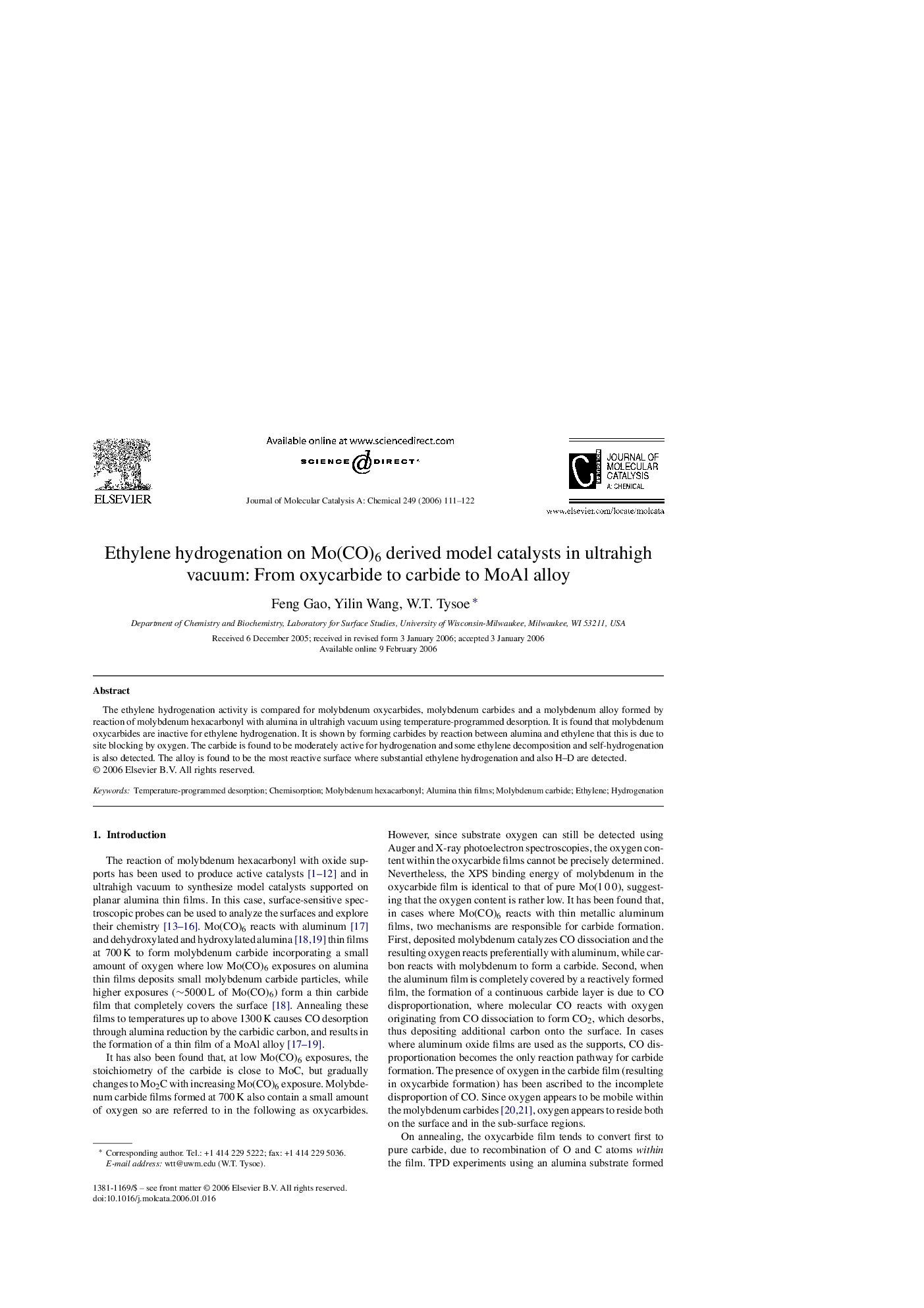| Article ID | Journal | Published Year | Pages | File Type |
|---|---|---|---|---|
| 69017 | Journal of Molecular Catalysis A: Chemical | 2006 | 12 Pages |
The ethylene hydrogenation activity is compared for molybdenum oxycarbides, molybdenum carbides and a molybdenum alloy formed by reaction of molybdenum hexacarbonyl with alumina in ultrahigh vacuum using temperature-programmed desorption. It is found that molybdenum oxycarbides are inactive for ethylene hydrogenation. It is shown by forming carbides by reaction between alumina and ethylene that this is due to site blocking by oxygen. The carbide is found to be moderately active for hydrogenation and some ethylene decomposition and self-hydrogenation is also detected. The alloy is found to be the most reactive surface where substantial ethylene hydrogenation and also H–D are detected.
Graphical abstractFigure optionsDownload full-size imageDownload as PowerPoint slide
